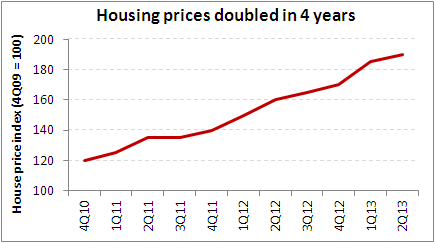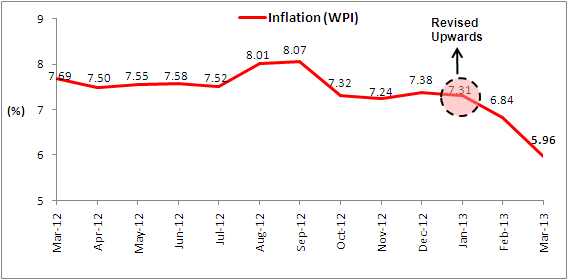Reach out to China, via Sikkim
It must be nearly 40 years since I made my way to Nathu-la, the pass at 14,400 ft that is supposed to be one of three Himalayan trade routes between India and China. It was a different world. Sikkim was a monarchy then and India and China bitterly critical of each other.
My travelling companion, Prince Wangchuck, was an engaging youth full of fun and promise. Now revered by legitimists as the 13th consecrated Chogyal of Sikkim, he is a 60-year-old recluse lost in meditation in some Nepalese sanctuary.
Wangchuck had a smattering of Mandarin. “Ni hao ma … How are you?” he asked the Chinese soldier on the other side of the barbed wire beyond the crudely painted “India Wall”. The man stared at us in surly silence. Wangchuck repeated the question. Again, there was no reply. Finally, when he yelled, “Ni hao ma?” a third time, the Chinese sentry grunted “Wo hen hao, xiexie… I am well” in an angry tone that suggested the opposite.
India probably hoped that China’s willingness to trade through this gap in the Himalayas implied acceptance of Sikkim’s status as an Indian state. For China did not reciprocate when India acknowledged Chinese sovereignty over Tibet in the 2003 “Declaration on Principles for Relations and Comprehensive Cooperation” between India and China. An American scholar, David Scott, points out in Sino-Indian Territorial Issues: The Razor’s Edge?, “the text shows a one-way agreement, one-way obligations and one-way concessions”. As for the complacent claim of implicit Chinese acceptance of Indian sovereignty, Scott warns “that was implied rather than explicit, de facto rather then de jure.” As if to bear out Scott’s doubts, China contested Indian control of the 2.1-sq-km Finger Area tract in northern Sikkim five years after the Declaration.
Delivering the K. Subrahmanyam Memorial Lecture, “China in the Twenty-First Century: What India Needs to Know About China’s World View” in New Delhi last August, Shyam Saran, former national security adviser, observed that although China handed over maps during Wen Jiabao’s 2005 visit “showing Sikkim as part of India… recently, some Chinese scholars have pointed out that the absence of an official statement recognising Indian sovereignty leaves the door open to subsequent shifts if necessary.”
Even the ostensible commercial rationale for reopening Nathu-la (ironically, on the Dalai Lama’s birthday, July 6, 2006) doesn’t appear to have been realised. Traditionally, trade between Sikkim and Tibet was conducted along 13 routes. The British preferred Nathu-la because of its gentler gradients and shorter distances (54 km from Gangtok, 520 km to Lhasa). Its closure in 1962 together with all the other passes marked the end of an era in history. The only person permitted for 44 years to cross the barbed-wire frontier at Nathu-la was a Chinese postman with an Indian military escort, who would hand over an empty mailbag to his Indian counterpart in a building at the border.
The closure sounded the death-knell of Kalimpong in West Bengal, once the meeting place of kalons (ministers) from Sikkim, Bhutan and Tibet and the nerve centre of the Tibet trade. More than 10,000 men were employed in sorting mounds of dirty white, grey or black wool from Tibet into neat bales for export to Britain and the US. Thousands more provided fodder and maize for mules, and exotic entertainment for their masters enjoying a 10-day respite from the privations of a bleak and dangerous road. The daily turnover of more than `400 million persuaded the State Bank of India to open a branch in Kalimpong.
Apart from wool and Kuomintang silver dollars, the caravans brought yaks’ tails, musk, borax, curios and Chinese rice. They took back cement, kerosene and all the manufactures of Indian factories. A car for the Dalai Lama was dismantled and carted up piece by piece. Indian officials turned a blind eye when rations and equipment for Mao Zedong’s forces, including jeeps from Kolkata, were similarly exported and reassembled at a factory at Phari on the Tibetan plateau.
Two new marts were set up at Sherathang in Sikkim and Rinqingang in Tibet under the 1991 Sino-Indian memorandum of understanding. But only local people can use the marts. However, Sikkim can now import several new items including readymade garments, shoes, quilts and blankets, carpets and Tibetan herbal medicines. The earlier list was restricted to 15 items like wool, cashmere goat, yak tails, sheep skins, horses and salt. Traders complained these items were of little value. “Who wants yak tails nowadays?” they asked.
The original export list of 29 items (including clothes, tea, rice, dry fruits and vegetable oil) has also been expanded to include processed food, flowers, fruits and spices, and religious products like beads, prayer wheels, incense sticks and butter oil lamps. The Sikkimese would like much more relaxation. They say the restriction to locals only encourages Rajasthani traders to operate benami through Sikkimese front men.
Two other passes — Gunji in Uttarakhand and Shipki in Himachal Pradesh — have also been opened. But the total trade isn’t even an infinitesimal fraction of the $66 billion bilateral trad. It makes no dent in India’s $23 billion trade deficit. Smuggling is rife through Nepal and, to a lesser extent, some north-eastern states.
But even if neither the political nor the economic argument for reopening the three passes has been fulfilled, it doesn’t mean they should be closed again. On the contrary, more passes should be opened and imaginatively administered on both sides of the border to encourage the human contact that is now sadly absent from Sino-Indian relations.
Back in Gangtok after many years, I couldn’t visit Nathu-la again. Severe hailstorms had blocked the road.
Wangchuck had a smattering of Mandarin. “Ni hao ma … How are you?” he asked the Chinese soldier on the other side of the barbed wire beyond the crudely painted “India Wall”. The man stared at us in surly silence. Wangchuck repeated the question. Again, there was no reply. Finally, when he yelled, “Ni hao ma?” a third time, the Chinese sentry grunted “Wo hen hao, xiexie… I am well” in an angry tone that suggested the opposite.
India probably hoped that China’s willingness to trade through this gap in the Himalayas implied acceptance of Sikkim’s status as an Indian state. For China did not reciprocate when India acknowledged Chinese sovereignty over Tibet in the 2003 “Declaration on Principles for Relations and Comprehensive Cooperation” between India and China. An American scholar, David Scott, points out in Sino-Indian Territorial Issues: The Razor’s Edge?, “the text shows a one-way agreement, one-way obligations and one-way concessions”. As for the complacent claim of implicit Chinese acceptance of Indian sovereignty, Scott warns “that was implied rather than explicit, de facto rather then de jure.” As if to bear out Scott’s doubts, China contested Indian control of the 2.1-sq-km Finger Area tract in northern Sikkim five years after the Declaration.
Delivering the K. Subrahmanyam Memorial Lecture, “China in the Twenty-First Century: What India Needs to Know About China’s World View” in New Delhi last August, Shyam Saran, former national security adviser, observed that although China handed over maps during Wen Jiabao’s 2005 visit “showing Sikkim as part of India… recently, some Chinese scholars have pointed out that the absence of an official statement recognising Indian sovereignty leaves the door open to subsequent shifts if necessary.”
Even the ostensible commercial rationale for reopening Nathu-la (ironically, on the Dalai Lama’s birthday, July 6, 2006) doesn’t appear to have been realised. Traditionally, trade between Sikkim and Tibet was conducted along 13 routes. The British preferred Nathu-la because of its gentler gradients and shorter distances (54 km from Gangtok, 520 km to Lhasa). Its closure in 1962 together with all the other passes marked the end of an era in history. The only person permitted for 44 years to cross the barbed-wire frontier at Nathu-la was a Chinese postman with an Indian military escort, who would hand over an empty mailbag to his Indian counterpart in a building at the border.
The closure sounded the death-knell of Kalimpong in West Bengal, once the meeting place of kalons (ministers) from Sikkim, Bhutan and Tibet and the nerve centre of the Tibet trade. More than 10,000 men were employed in sorting mounds of dirty white, grey or black wool from Tibet into neat bales for export to Britain and the US. Thousands more provided fodder and maize for mules, and exotic entertainment for their masters enjoying a 10-day respite from the privations of a bleak and dangerous road. The daily turnover of more than `400 million persuaded the State Bank of India to open a branch in Kalimpong.
Apart from wool and Kuomintang silver dollars, the caravans brought yaks’ tails, musk, borax, curios and Chinese rice. They took back cement, kerosene and all the manufactures of Indian factories. A car for the Dalai Lama was dismantled and carted up piece by piece. Indian officials turned a blind eye when rations and equipment for Mao Zedong’s forces, including jeeps from Kolkata, were similarly exported and reassembled at a factory at Phari on the Tibetan plateau.
Two new marts were set up at Sherathang in Sikkim and Rinqingang in Tibet under the 1991 Sino-Indian memorandum of understanding. But only local people can use the marts. However, Sikkim can now import several new items including readymade garments, shoes, quilts and blankets, carpets and Tibetan herbal medicines. The earlier list was restricted to 15 items like wool, cashmere goat, yak tails, sheep skins, horses and salt. Traders complained these items were of little value. “Who wants yak tails nowadays?” they asked.
The original export list of 29 items (including clothes, tea, rice, dry fruits and vegetable oil) has also been expanded to include processed food, flowers, fruits and spices, and religious products like beads, prayer wheels, incense sticks and butter oil lamps. The Sikkimese would like much more relaxation. They say the restriction to locals only encourages Rajasthani traders to operate benami through Sikkimese front men.
Two other passes — Gunji in Uttarakhand and Shipki in Himachal Pradesh — have also been opened. But the total trade isn’t even an infinitesimal fraction of the $66 billion bilateral trad. It makes no dent in India’s $23 billion trade deficit. Smuggling is rife through Nepal and, to a lesser extent, some north-eastern states.
But even if neither the political nor the economic argument for reopening the three passes has been fulfilled, it doesn’t mean they should be closed again. On the contrary, more passes should be opened and imaginatively administered on both sides of the border to encourage the human contact that is now sadly absent from Sino-Indian relations.
Back in Gangtok after many years, I couldn’t visit Nathu-la again. Severe hailstorms had blocked the road.
The writer is a senior journalist, columnist and author








